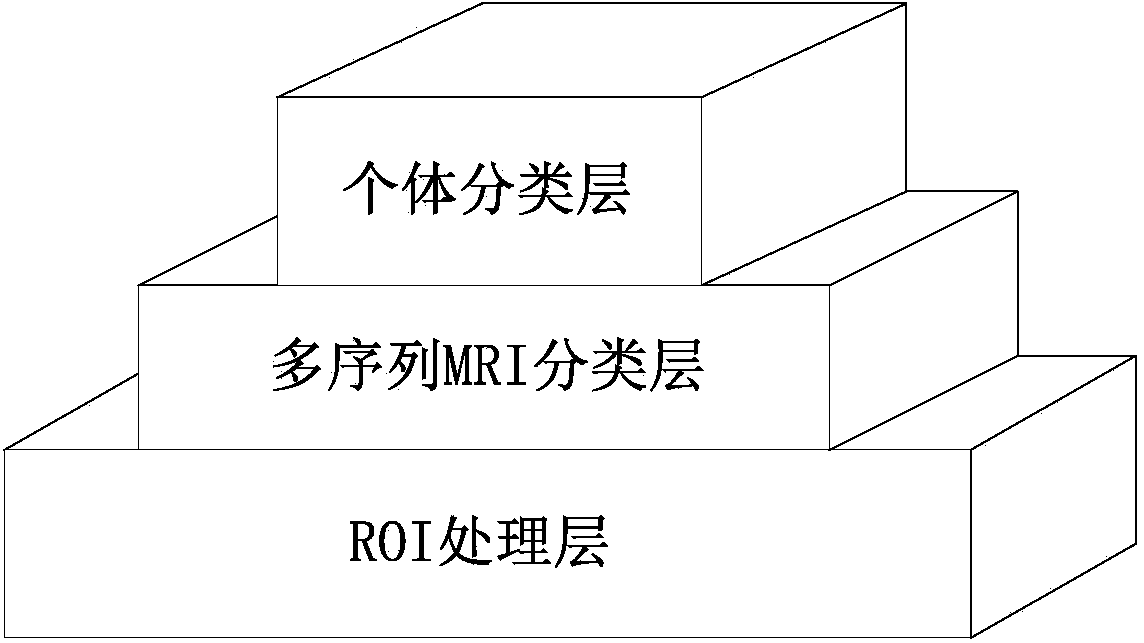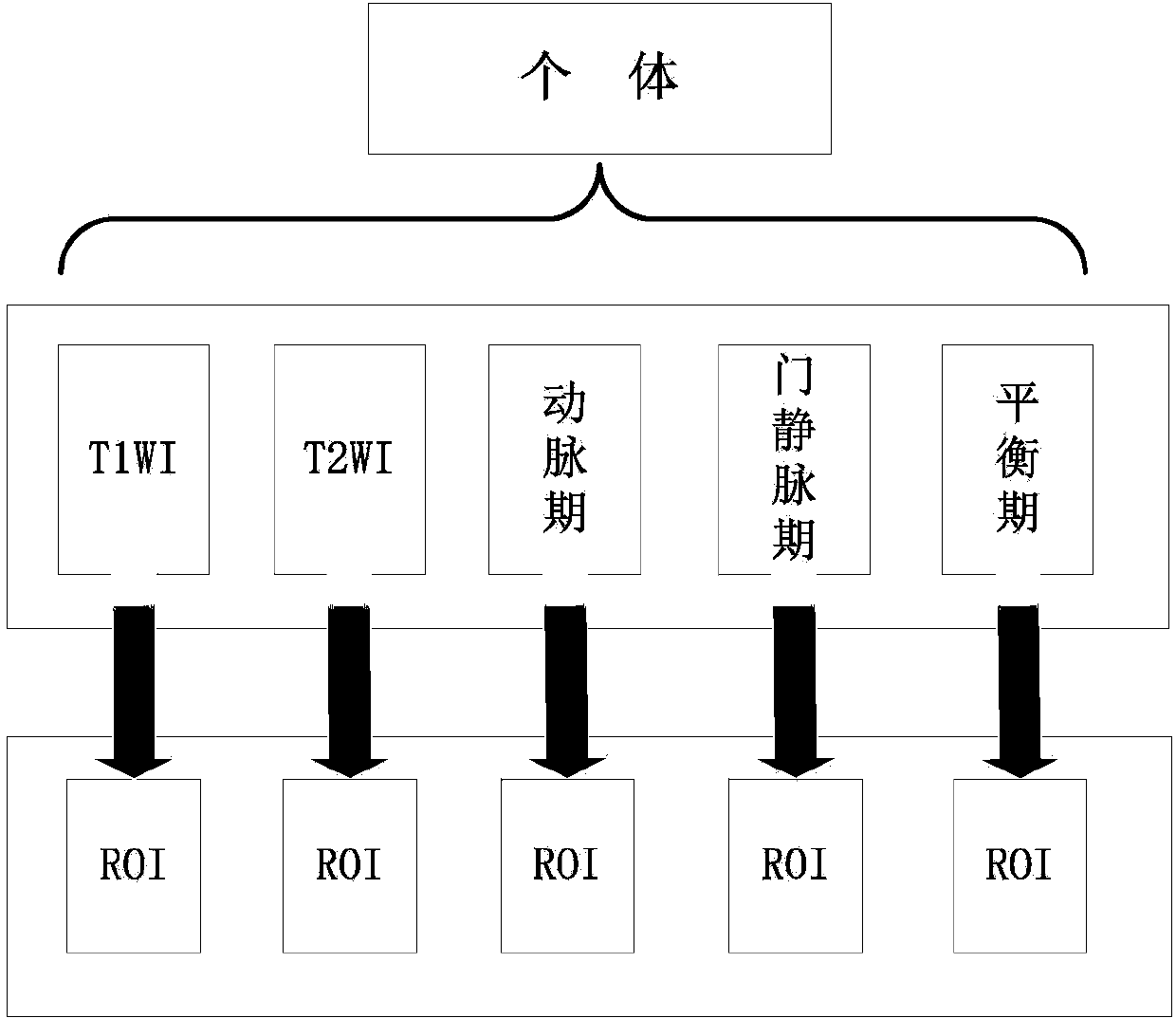Image computer-aided diagnosis method for multi-sequence nuclear magnetic resonance images
A computer-aided, nuclear magnetic resonance technology, applied in computer parts, calculations, instruments, etc., can solve the problems of staying in, single use of classifiers, single use, etc.
- Summary
- Abstract
- Description
- Claims
- Application Information
AI Technical Summary
Problems solved by technology
Method used
Image
Examples
Embodiment Construction
[0071] The specific implementation of the present invention will be described in detail below in conjunction with the accompanying drawings and technical solutions. The present invention classifies abnormal structures by utilizing five sequences of MRI, T1WI, T2WI, arterial phase, equilibrium phase phase, and portal vein phase. MRI contains a large amount of digital and morphological information such as cell density, fat, and blood flow. It has high resolution for soft tissues and can provide multi-parameter, multi-sequence, and multi-directional imaging. It has become one of the important methods for judging abnormal structures in the world. At the same time, the performance of abnormal structures in these five MRI sequences has its own advantages. The multi-level three-classification image computer-aided judgment and classification method based on multi-sequence MRI provided by the present invention is performed from three levels of ROI processing, multi-sequence MRI classif...
PUM
 Login to View More
Login to View More Abstract
Description
Claims
Application Information
 Login to View More
Login to View More - R&D
- Intellectual Property
- Life Sciences
- Materials
- Tech Scout
- Unparalleled Data Quality
- Higher Quality Content
- 60% Fewer Hallucinations
Browse by: Latest US Patents, China's latest patents, Technical Efficacy Thesaurus, Application Domain, Technology Topic, Popular Technical Reports.
© 2025 PatSnap. All rights reserved.Legal|Privacy policy|Modern Slavery Act Transparency Statement|Sitemap|About US| Contact US: help@patsnap.com



